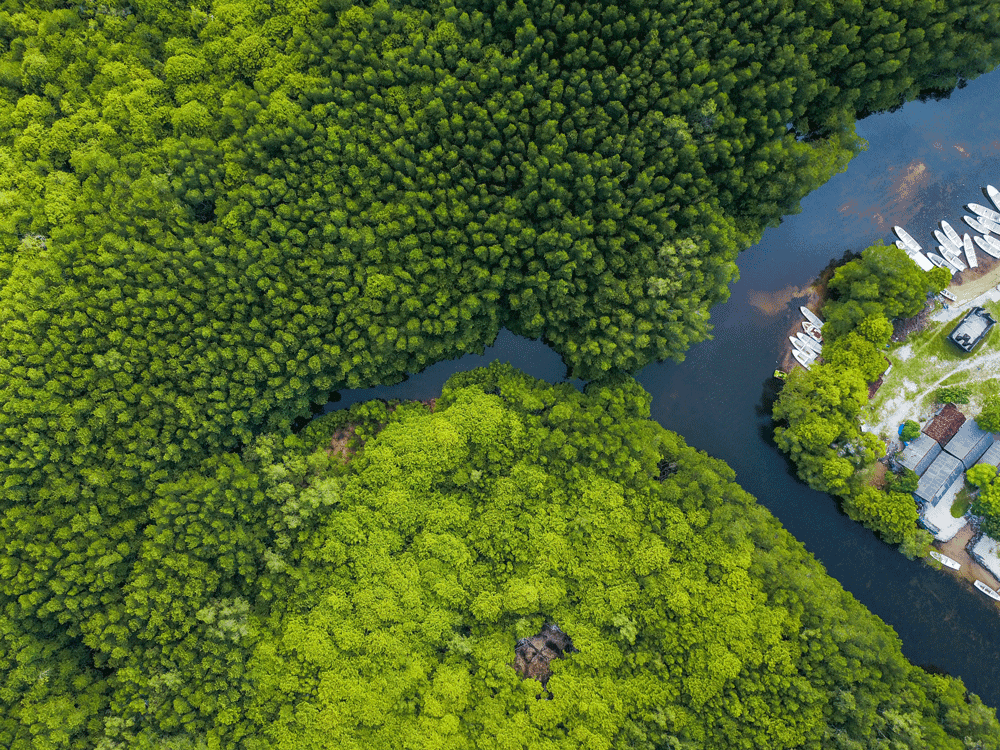Apolitical spoke with Ben Broche, program manager of the Lab, about the many climate finance instruments incubated by the Lab and how it “aims to create sustainable development financial products that are innovative to attract private investors and donor governments.”
The article mentions solutions developed by the Lab, like Cloud Forest Blue Energy Mechanism and Restoration Insurance Service Company (RISCO). The original article is here.
—
Inside the innovation lab solving climate financing
By Amelia Axelsen, August 16, 2019
In Latin America, half of existing cloud forests — moisture-rich forests with low-level cloud cover — have been lost. Meanwhile, government funding for efforts to revive destroyed natural environments is lagging and the private sector has been slow to invest.
To generate cash for efforts to save the cloud forests, The Nature Conservancy and Conservation International collaborated on a plan: a pay-for-success model involving hydro plant operators and investors called the Cloud Forest Blue Energy Mechanism.
The solution was one of many developed in the Climate Policy Initiative’s (CPI) Global Innovation Lab for Climate Finance (The Lab), a public-private partnership created to help deliver financial instruments — monetary contracts such as debts, equities, and asset-backed securities — that generate revenue to solve climate challenges at scale in developing nations.
The idea behind the project is that by packaging nature as having financial assets with economic value, it should prove the worth of Earth’s resources and highlight the high costs associated with their loss. While public funding for natural climate solutions falls short, The Lab is betting big that eager private investors and donor governments will put up the capital to fund these solutions, filling the financial gap.
Where’s the money?
According to Conservation International, national governments allocate only about 2% of their total climate finance budget each year to Nature-based Solutions (NBS), policies that use land management, restoration, and conservation as a mechanism to mitigate the effects of climate change.
“Generally, we have very limited public resources [for climate solutions] from governments — even with donor governments having made significant commitments in terms of climate financing for transitioning to a low carbon future for emerging economies, which remains particularly challenging,” said The Lab’s lead Ben Broche.
Despite the expected hit to businesses’ bottom line performance, and portfolio losses from the fallout of climate catastrophes, a lack of climate financing from private companies is also a problem. Private money can be slow to materialise due to the lack of perceived risk of climate change and poor familiarity with the sectors and geographies that will be most crucial for a low carbon future.
Currently, climate change is expected to cause $4.6 trillion in portfolio losses. If the planet has a five-degree increase in temperature, that number is expected to climb to $13.8 trillion, according to an Economist Intelligence Unit Report. For example, Blackrock estimates that the three major hurricanes – Irma, Harvey and Maria – that hit the US in 2017 caused losses in the equivalent of 0.5% of GDP and led to unexpected volatility in the insurance and housing markets.
Broche said the motivation behind The Lab’s inception is to address the funding shortfall for natural climate solutions needed to limit the increase of a 1.5 or 2-degree rise in global warming and meet nationally determined contributions created under the 2015 Paris Agreement.
The Lab aims to create sustainable development financial products that are innovative to attract private investors and donor governments.
Branding climate solutions as investment opportunities is a scalable way to unlock new sources of capital to pay for NBS, and by protecting and conserving natural resources, investors and donor governments will get a return, while the world benefits from nature’s ability to mitigate climate disasters.
Lab instruments and donor governments, who provide grants and foreign aid funding to developing nations, make sustainable development financial products more attractive using blended finance.
Blended finance is a structured approach to investing, where public money is “blended” with private capital. The capital, in this case, is more risk-tolerant and concessionary to spur private investments, giving investors an advantage in emerging markets.
The Lab is currently developing 35 different financial instruments and has garnered over $230 million in investments from members and $1.9 billion in overall investments.
The Lab’s policy solutions fit within five categories: energy efficiency, renewable energy, sustainable transport, climate-smart agriculture, and deforestation.
Members of The Lab include donor governments: The United Kingdom, Germany, Norway, the Netherlands, Australia, and Denmark, as well as various financial institutions and philanthropic partners.
Each Lab instrument is structured differently, so that once ideas are selected by Lab members, each idea goes through a rigorous development process: more than six months of design, planning and implementation.
Lab ideas not only create financial products for NBS, but attach a monetary value to nature to highlight the economic benefits of nature and the cost companies and governments will incur if they fail to protect the environment.
Putting a price on nature
Allie Goldstein, a scientist at Conservation International, said that the preservation and conservation of nature provide monetary benefits that far exceed the small fraction of funds allocated to them.
For example, one Lab project, the Restoration Insurance Service Company for Coastal Risk Reduction (RISCO), secures Lab investments for the conservation and restoration of mangroves — clusters of trees and shrubs that live on shorelines — for carbon capture and flood prevention in the Philippines.
Mangroves provide an estimated $82 billion in flood risk-prevention annually for coastal communities, according to Goldstein.
Under the RISCO project, insurance companies price the mangroves’ risk reduction value; their potential to offset monetary losses from coastal flooding and the benefits they provide by capturing carbon.
Insurance companies then embed the risk reduction value into insurance models for coastal property sales, which will then be sold at a reduced premium rate. The savings then pay for conservation and restoration of mangroves.
The struggle with resources for NBS can be attributed to a lack of monetary value attached to nature, said Goldstein. Putting a price tag on nature’s benefits can ensure that they aren’t undervalued assets.
For example, the Cloud Forest Blue Energy Mechanism puts a price on the benefits hydropower plant operators receive from cloud forests. Cloud forests’ ability to retain and distribute clean water increases the volume of water that flows to reservoirs, which reduces maintenance costs.
Hydropower plants’ watersheds are located in nearly half of all Latin America’s cloud forests – and despite being dependent on them, operators use them as a free resource without restrictions.
In The Lab’s finance model, private institutions including the Dutch Development Bank FMO, and public participants such as the Nordic Development Fund, pay for conservation and restoration efforts in the cloud forests by working with local governments, citizens, and conservation groups. Now, once hydropower operators reap the ecosystem benefits of cloud forests, they pay back investors for conserving cloud forests.
The Lab is a vehicle to develop and stress test proposals that are investable and will hopefully generate revenue for NBS, said Goldstein.
Romas Garbaliauskas, a senior legal adviser who assisted on Cloud Forest Blue Energy Mechanism for Conservation International, said that it’s a big win for nature if conservation and restoration are considered financially valuable to end-users. – Amelia Axelsen

